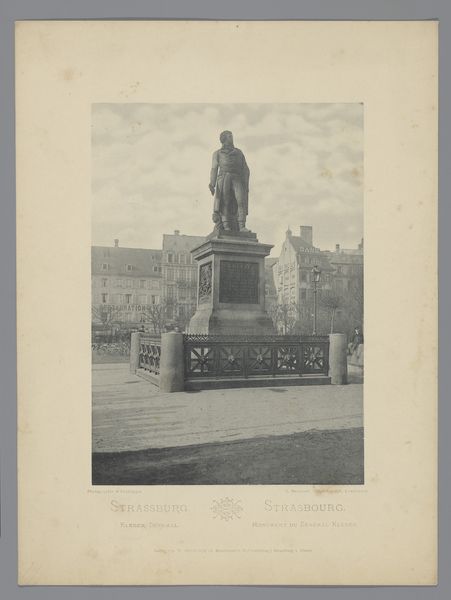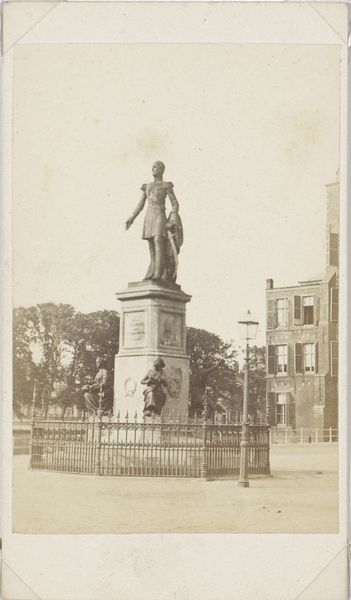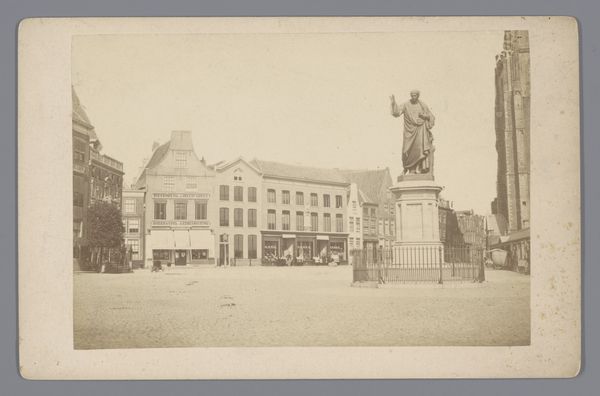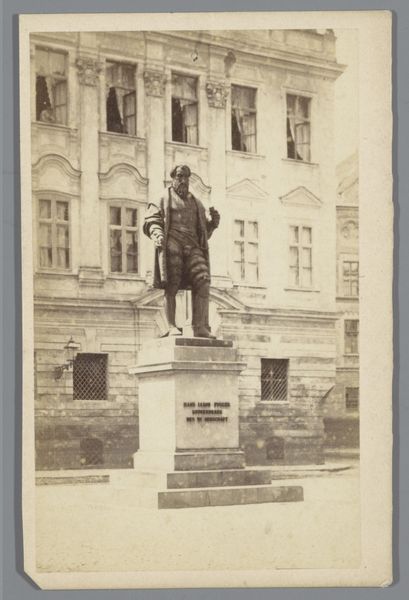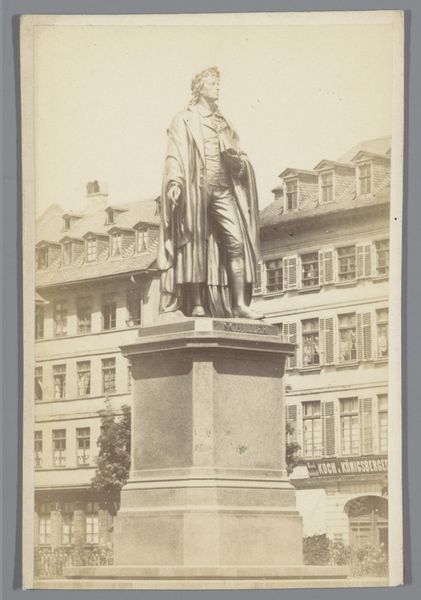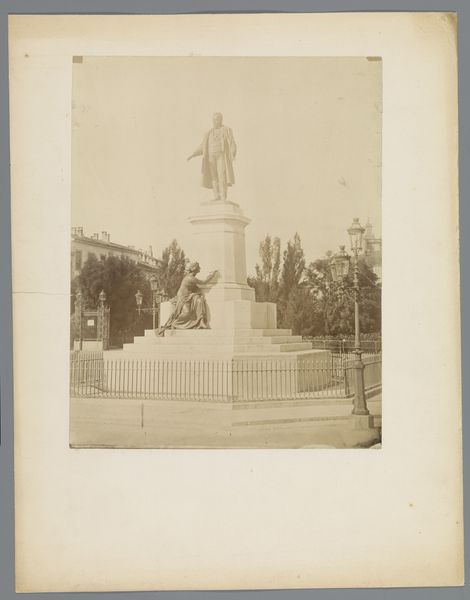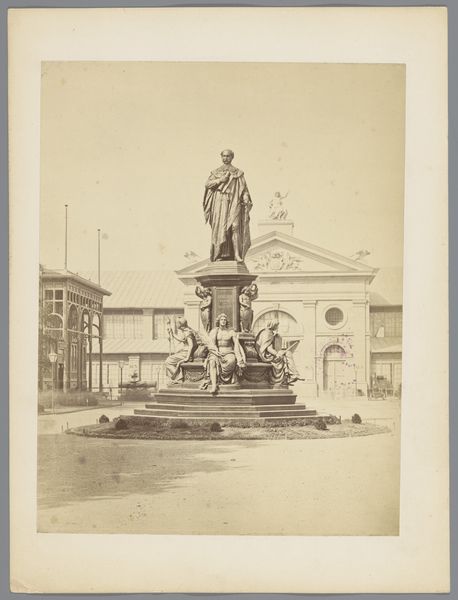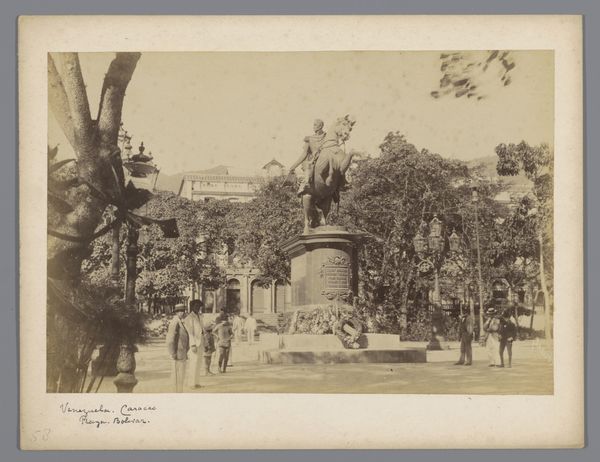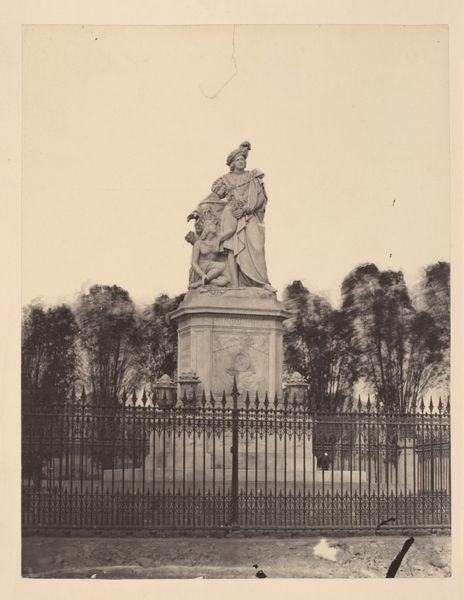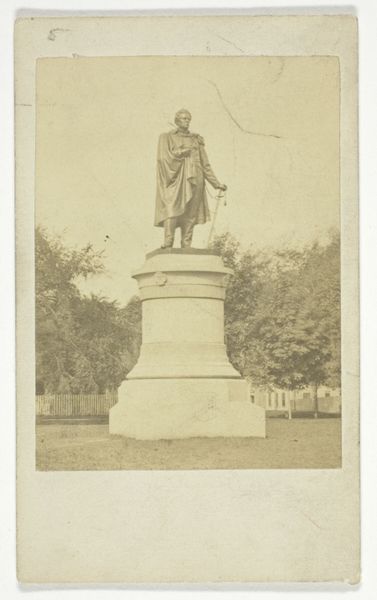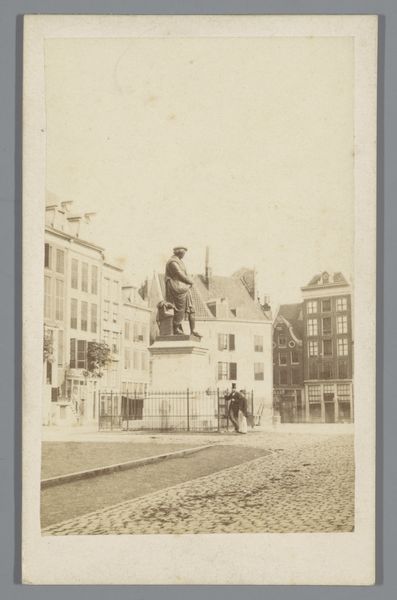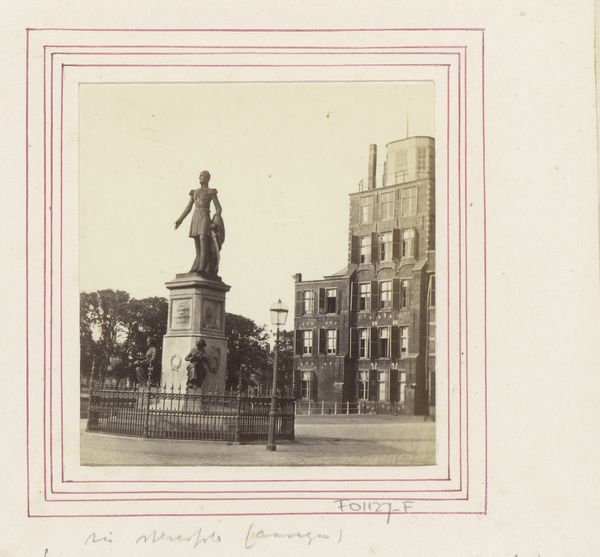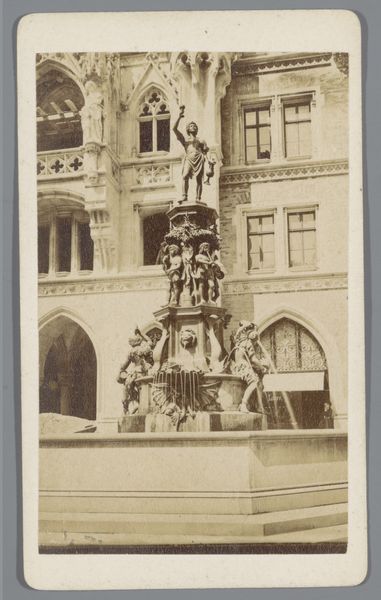
Standbeeld van Willem II door E.F. Georges op het Buitenhof in Den Haag, met op de achtergrond het Binnenhof 1854 - 1900
0:00
0:00
juleshippolytequeval
Rijksmuseum
Dimensions: height 85 mm, width 63 mm, height 94 mm, width 68 mm
Copyright: Rijks Museum: Open Domain
This albumen silver print by Jules Hippolyte Quéval captures the statue of Willem II in The Hague. Dominating the frame is Willem II, depicted as a commanding military figure. The statue has a dog at his feet, a symbol of loyalty and vigilance, echoing the protective canines seen alongside rulers in ancient Roman sculptures. Consider the emotional weight of placing such a figure in the public square. It recalls equestrian statues of Roman emperors, a visual assertion of power. Yet, unlike the dynamic movement of, say, Marcus Aurelius on horseback, Willem II stands static. Note the women flanking the statue's plinth. One sits with a book and another weeps. The motif of mourning figures flanking monuments recurs throughout history, from ancient sarcophagi to modern war memorials. It's a potent symbol of collective grief, a recurring motif in the theater of memory, reminding us that power and loss are eternally intertwined. Thus, Willem II, dog at his feet, is not merely a man, but an idea, resurrected and reinterpreted for a new age.
Comments
No comments
Be the first to comment and join the conversation on the ultimate creative platform.
